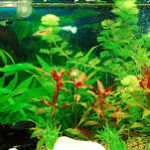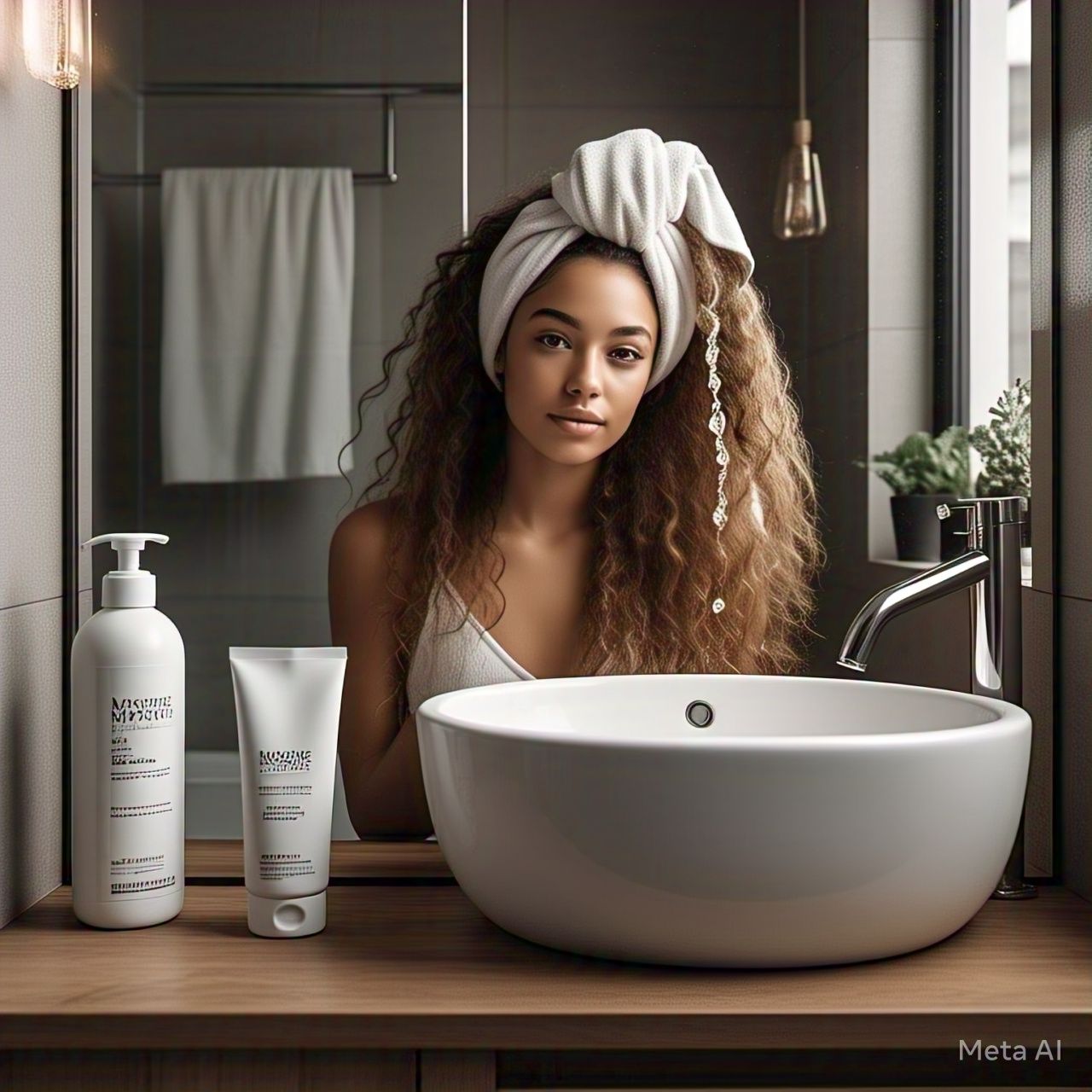Understanding Damaged Hair and the Role of Conditioners
What Causes Hair Damage?
Hair damage occurs when the outer protective layer, known as the cuticle, becomes weak or breaks down. Several factors contribute to this problem, including excessive heat styling, chemical treatments like coloring or perming, environmental stressors such as sun exposure and pollution, and even poor hair care habits like rough towel drying. Over time, damaged hair loses its natural shine, becomes dry, brittle, and prone to breakage.
The structure of hair consists of three layers: the medulla (innermost), cortex (middle), and cuticle (outermost). When the cuticle is compromised, moisture escapes, leaving hair dehydrated. Without proper care, the damage worsens, leading to split ends and frizz. Understanding these causes is the first step toward restoring hair health.
How Conditioners Work to Repair Hair
Conditioners play a crucial role in replenishing lost moisture and repairing damaged strands. They contain key ingredients such as humectants, emollients, and proteins that work together to smooth the hair cuticle, lock in hydration, and improve elasticity.
Humectants like glycerin and hyaluronic acid attract moisture from the air, keeping hair hydrated. Emollients such as natural oils (argan, coconut, and jojoba) coat the hair shaft, reducing friction and preventing further damage. Proteins like keratin and silk amino acids help rebuild the hair’s structure, strengthening weak areas.
For damaged hair, deep conditioning treatments are especially beneficial. These products penetrate deeper into the hair shaft, delivering intense nourishment that regular conditioners may not provide. By incorporating the right conditioner into a hair care routine, individuals can gradually restore their hair’s natural shine and softness.
Choosing the Right Conditioner for Damaged Hair
Not all conditioners are created equal, especially when dealing with damaged hair. It’s essential to look for formulations specifically designed for repair and hydration. Sulfate-free options are ideal because they cleanse gently without stripping natural oils.
Ingredients to prioritize include shea butter for deep moisture, ceramides for cuticle repair, and panthenol (provitamin B5) for strengthening. Avoiding harsh chemicals like parabens and silicones can also prevent further dryness and buildup.
Additionally, hair type plays a role in selecting the best conditioner. Those with fine hair may prefer lightweight formulas that don’t weigh hair down, while individuals with thick or curly hair might benefit from richer, creamier textures. Understanding these distinctions ensures the chosen product delivers maximum benefits.
The Importance of Consistent Hair Care
Repairing damaged hair doesn’t happen overnight. Consistency is key—using the right conditioner regularly, minimizing heat exposure, and protecting hair from environmental damage all contribute to long-term recovery.
Incorporating weekly deep conditioning masks, avoiding excessive washing, and using a wide-tooth comb to detangle wet hair can further enhance results. Over time, these practices help rebuild hair strength, restore shine, and prevent future damage.
By recognizing the causes of hair damage and understanding how conditioners work, individuals can make informed choices to revive their locks. The journey to healthier hair begins with the right products and a dedicated care routine.
Key Ingredients to Look for in Repairing Conditioners
Natural Oils for Deep Hydration
Natural oils have been used for centuries to nourish and repair hair. Ingredients like argan oil, coconut oil, and jojoba oil are particularly effective for damaged hair. Argan oil, often called “liquid gold,” is rich in vitamin E and fatty acids, which help restore shine and elasticity.
Coconut oil penetrates the hair shaft, reducing protein loss and preventing breakage. Jojoba oil closely resembles the scalp’s natural sebum, making it an excellent moisturizer without leaving a greasy residue. These oils not only hydrate but also create a protective barrier against environmental damage.
Proteins for Strengthening Weak Hair
Damaged hair often suffers from protein deficiency, leading to brittleness. Conditioners containing hydrolyzed proteins like keratin, collagen, and silk amino acids help rebuild the hair’s structure. Keratin, a natural hair protein, fills in gaps in the cuticle, smoothing frizz and enhancing strength.
Collagen boosts moisture retention, improving hair elasticity and reducing breakage. Silk amino acids, though smaller in molecular size, penetrate deeply, providing lightweight repair without weighing hair down. For those with chemically treated hair, protein-rich conditioners can be a game-changer in restoring vitality.
Humectants for Long-Lasting Moisture
Humectants are moisture-binding ingredients that prevent dryness by attracting water molecules. Glycerin, hyaluronic acid, and panthenol (provitamin B5) are common humectants in hair conditioners. Glycerin draws moisture from the air into the hair, keeping it hydrated throughout the day.
Hyaluronic acid, known for its use in skincare, also benefits hair by holding up to 1000 times its weight in water. Panthenol not only moisturizes but also strengthens hair follicles, reducing breakage over time. These ingredients are especially useful in dry climates where hair tends to lose moisture quickly.
Avoiding Harmful Additives
While some ingredients work wonders for damaged hair, others can do more harm than good. Sulfates, commonly found in shampoos, strip natural oils, leading to further dryness. Silicones, though they provide temporary smoothness, can build up over time, making hair dull and lifeless.
Parabens and artificial fragrances may cause scalp irritation, worsening hair health. Opting for clean, sulfate-free, and silicone-free conditioners ensures that hair receives pure nourishment without any adverse effects. Reading labels carefully helps in making the best choice for long-term hair repair.
The Science Behind Effective Formulations
Modern hair care science has advanced significantly, allowing for conditioners that combine multiple beneficial ingredients. Bond-repairing technologies, such as Olaplex’s patented formula, work at a molecular level to mend broken disulfide bonds in the hair.
Ceramides, often found in high-end conditioners, reinforce the hair’s lipid barrier, preventing moisture loss. Peptides stimulate hair growth while improving texture. Understanding these scientific advancements helps in selecting conditioners that offer more than just surface-level benefits.
By focusing on key ingredients, individuals can choose conditioners that truly repair and rejuvenate damaged hair. The right combination of natural oils, proteins, and humectants ensures lasting hydration, strength, and shine.
Top Conditioners for Repairing Damaged Hair and How to Use Them
High-End Repairing Conditioners Worth the Investment
When it comes to restoring severely damaged hair, premium conditioners often deliver superior results due to their advanced formulations. Olaplex No. 5 Bond Maintenance Conditioner is a standout choice, utilizing bond-building technology to repair broken disulfide bonds in the hair. This conditioner not only strengthens but also enhances shine and manageability.
Another luxury option is the Kérastase Resistance Bain Force Architecte Conditioner, designed for weakened and brittle hair. Infused with ceramides and proteins, it reinforces the hair’s structure while providing deep hydration. For those with color-treated hair, the Pureology Strength Cure Superfoods Conditioner is an excellent pick, as it combines vegan proteins, antioxidants, and a sulfate-free formula to protect and revive processed strands.
While these high-end products come with a steeper price tag, their concentrated formulas often require less product per use, making them cost-effective in the long run. Investing in a quality conditioner can significantly reduce breakage and improve overall hair health.
Drugstore Gems That Deliver Professional Results
Not everyone can splurge on luxury hair care, but fortunately, several affordable conditioners perform exceptionally well. The SheaMoisture Manuka Honey & Mafura Oil Intensive Hydration Conditioner is a cult favorite, packed with natural butters and oils that restore moisture to parched hair. Its thick, creamy texture works wonders on dry, frizzy, or chemically treated hair.
Another budget-friendly hero is the L’Oréal Paris Elvive Total Repair 5 Conditioner, which targets five signs of damage: split ends, weakness, roughness, dullness, and dehydration. The protein-enriched formula helps reinforce the hair fiber without weighing it down. For those with fine hair that gets easily weighed down, the Maui Moisture Lightweight Hydration + Hibiscus Water Conditioner offers hydration without heaviness, thanks to its water-based formula.
These drugstore options prove that effective hair repair doesn’t always require a high price tag. With consistent use, they can restore softness, shine, and strength to damaged hair.
Natural and DIY Alternatives for Hair Restoration
For those who prefer a more organic approach, natural conditioners and homemade treatments can be highly effective. Apple cider vinegar rinses, for example, help balance the scalp’s pH, remove buildup, and add shine. A mixture of one part apple cider vinegar to three parts water can be used as a final rinse after shampooing.
Avocado and honey masks are another great option for deep conditioning. Avocado is rich in healthy fats and vitamins E and B, which nourish the hair, while honey acts as a humectant to lock in moisture. Simply mash one ripe avocado with two tablespoons of honey, apply to damp hair, leave for 20-30 minutes, then rinse thoroughly.
Coconut oil remains one of the most popular natural treatments for damaged hair. Warm a small amount and massage it into the scalp and hair, focusing on the ends. Leave it on for at least an hour (or overnight for intense repair) before washing it out with a gentle shampoo. These natural remedies provide deep conditioning without synthetic additives, making them ideal for those with sensitive scalps or a preference for clean beauty.
How to Properly Apply Conditioner for Maximum Benefits
Using conditioner correctly is just as important as choosing the right one. Many people make the mistake of applying it to the roots, which can lead to greasiness and flatness. Instead, focus on the mid-lengths to ends, where damage is most concentrated. After shampooing, gently squeeze excess water from the hair before applying a quarter-sized amount (adjust based on hair length and thickness).
For deeper conditioning, detangle hair with a wide-tooth comb while the conditioner is in, ensuring even distribution. Leave it on for at least 2-3 minutes—longer if using a deep conditioning mask. Rinse with cool water to seal the cuticle, enhancing shine and reducing frizz.
For extremely damaged hair, the “squish to condish” method, popular in the curly hair community, can be beneficial. This involves applying conditioner to soaking-wet hair, scrunching it upward to encourage absorption, and then rinsing only partially to leave some moisture behind. This technique helps ultra-dry hair retain hydration longer.
Common Conditioning Mistakes to Avoid
Even with the best products, improper use can hinder results. One major mistake is over-conditioning, which can lead to buildup and limp hair. Those with fine or oily hair should limit deep conditioning to once a week, while those with thick, curly, or severely damaged hair may benefit from more frequent use.
Another error is using hot water to rinse out conditioner, which can strip moisture and cause further damage. Lukewarm or cool water is ideal for maintaining hydration. Additionally, skipping regular trims while relying solely on conditioners can prevent true recovery, as split ends will continue to travel up the hair shaft.
Finally, not tailoring the conditioner to hair type can lead to unsatisfactory results. Heavy creams may overwhelm fine hair, while lightweight formulas might not provide enough moisture for coarse or curly textures. Understanding individual hair needs ensures the chosen product works effectively.
By selecting the right conditioner—whether high-end, drugstore, or natural—and applying it correctly, damaged hair can gradually regain its health and luster. The next step involves maintaining these results through proper aftercare and protective measures.
Long-Term Hair Repair and Maintaining Restored Shine
Protective Habits to Prevent Further Damage
Restoring damaged hair is only half the battle—keeping it healthy requires consistent care and protective measures. One of the most important habits to adopt is minimizing heat styling. Blow dryers, flat irons, and curling wands can strip moisture and weaken the hair cuticle. When heat tools are necessary, using a thermal protectant spray creates a barrier against damage. Lower heat settings and limiting use to special occasions also help preserve hair integrity.
Another crucial practice is gentle handling, especially when hair is wet and most vulnerable. Vigorous towel-drying can cause friction and breakage, so instead, hair should be patted dry with a microfiber towel or an old cotton T-shirt. Wide-tooth combs or detangling brushes should be used on damp hair, starting from the ends and working upward to avoid unnecessary stress on the strands.
Environmental factors like sun exposure, chlorine, and saltwater can also contribute to dryness and brittleness. Wearing a hat or using UV-protectant hair products shields strands from sun damage. Rinsing hair with fresh water before swimming and applying a leave-in conditioner creates a protective layer against chlorine and salt. These small adjustments in daily routines can make a significant difference in maintaining hair health.
The Role of Diet and Hydration in Hair Repair
Healthy hair starts from within. A diet rich in vitamins, minerals, and proteins supports hair growth and strength. Foods high in omega-3 fatty acids, such as salmon, walnuts, and flaxseeds, help maintain scalp health and prevent dryness. Biotin, found in eggs, nuts, and leafy greens, promotes keratin production, which is essential for strong hair.
Iron and zinc deficiencies can lead to hair thinning and shedding, so incorporating lean meats, beans, and fortified cereals ensures adequate intake. Vitamin C, found in citrus fruits and bell peppers, aids collagen production, improving hair elasticity. Additionally, staying hydrated by drinking enough water keeps hair moisturized from the inside out.
While topical treatments like conditioners provide external nourishment, combining them with a nutrient-rich diet accelerates repair and enhances overall hair vitality. Supplements like collagen peptides or biotin capsules can also be beneficial for those with dietary restrictions, though consulting a healthcare professional before starting any regimen is advisable.
How Often Should Hair Be Washed and Conditioned?
A common misconception is that frequent washing leads to dryness, but the ideal frequency depends on hair type and lifestyle. Those with oily scalps may need to shampoo every other day, while individuals with dry or curly hair can extend washes to once or twice a week. Over-washing can strip natural oils, but under-washing can lead to buildup, clogging follicles and hindering growth.
Conditioning routines should align with shampooing—every wash for dry or damaged hair, and every other wash for fine or oily hair. Deep conditioning treatments should be used weekly for severely damaged strands and bi-weekly for maintenance. Leave-in conditioners or hair serums can provide extra moisture between washes without weighing hair down.
Listening to the hair’s needs is key. If it feels brittle or looks dull, increasing conditioning may help. If it appears limp or greasy, scaling back or switching to a lighter formula might be necessary. Adjusting the routine based on seasonal changes, such as more frequent conditioning in winter, also helps maintain balance.
Final Tips for Lasting Hair Health and Shine
Achieving and maintaining healthy, shiny hair is an ongoing process. Regular trims every 6-8 weeks prevent split ends from traveling up the shaft, reducing the need for drastic cuts later. Sleeping on a silk or satin pillowcase minimizes friction, preventing breakage and frizz. Protective hairstyles like loose braids or buns reduce daily wear and tear, especially for those with long hair.
Incorporating scalp massages stimulates blood flow, encouraging growth and distributing natural oils. Using a boar bristle brush on dry hair helps spread oils from the roots to the ends, adding natural shine. Avoiding tight hairstyles and harsh elastics prevents traction alopecia, a condition caused by constant pulling on hair follicles.
Finally, patience is essential. Hair grows an average of half an inch per month, so visible repair takes time. Consistently using the right products, protecting hair from damage, and nourishing it from the inside will yield gradual but lasting results.
Conclusion: Embracing the Journey to Healthier Hair
Restoring damaged hair to its former glory is not an overnight miracle but a journey of mindful care. From selecting the right conditioner—whether high-end, drugstore, or natural—to adopting protective habits and maintaining a healthy diet, every step contributes to stronger, shinier locks.
Understanding the causes of damage, recognizing the importance of key ingredients, and applying products correctly all play a role in revitalizing hair. By committing to a tailored routine and avoiding common pitfalls, anyone can transform brittle, lifeless strands into soft, radiant hair.
The true moisture miracle lies in consistency and dedication. With the right knowledge and tools, damaged hair doesn’t have to be permanent. Instead, it can become a testament to resilience and renewal, proving that even the most stressed strands can regain their natural beauty.










